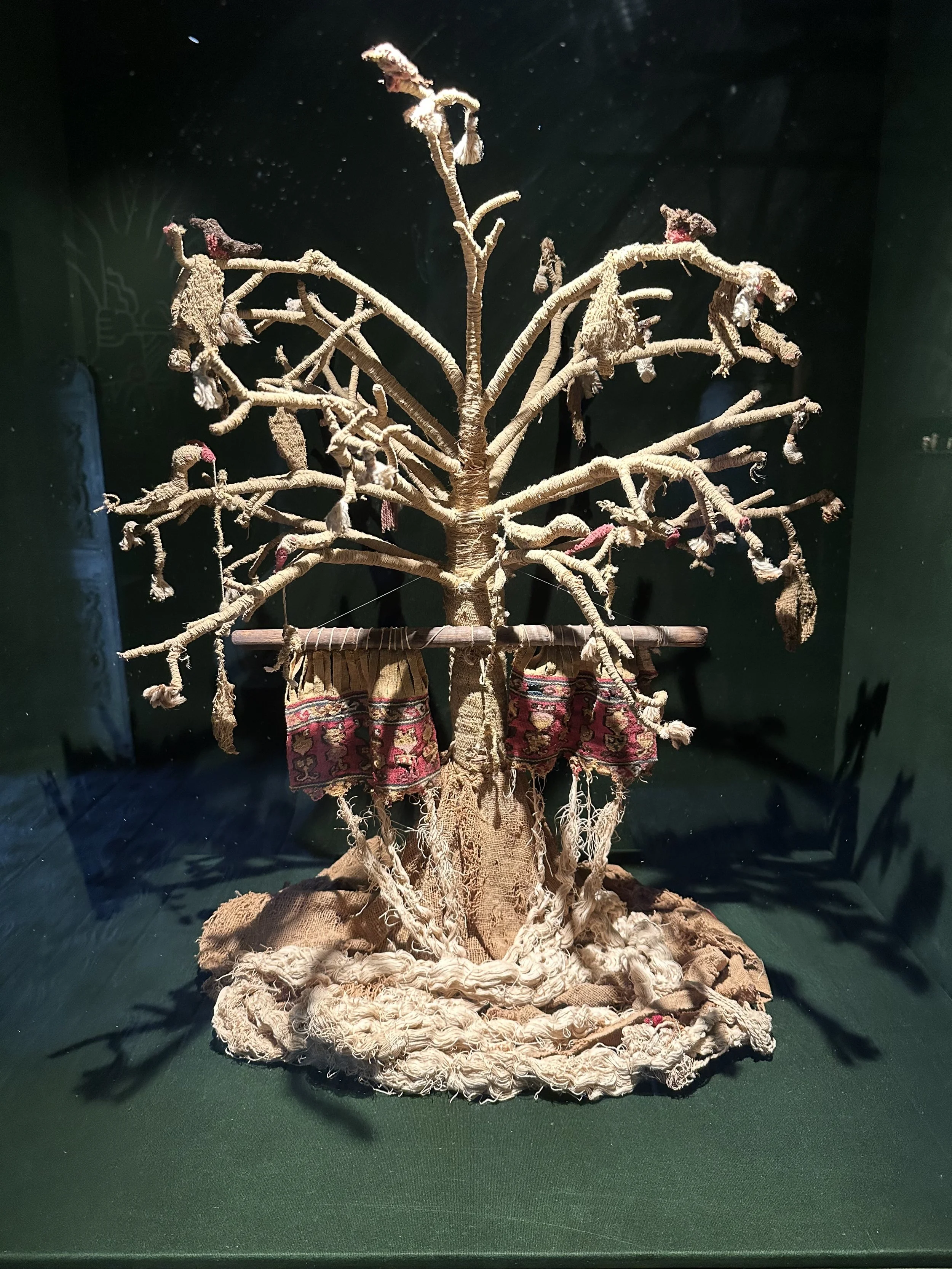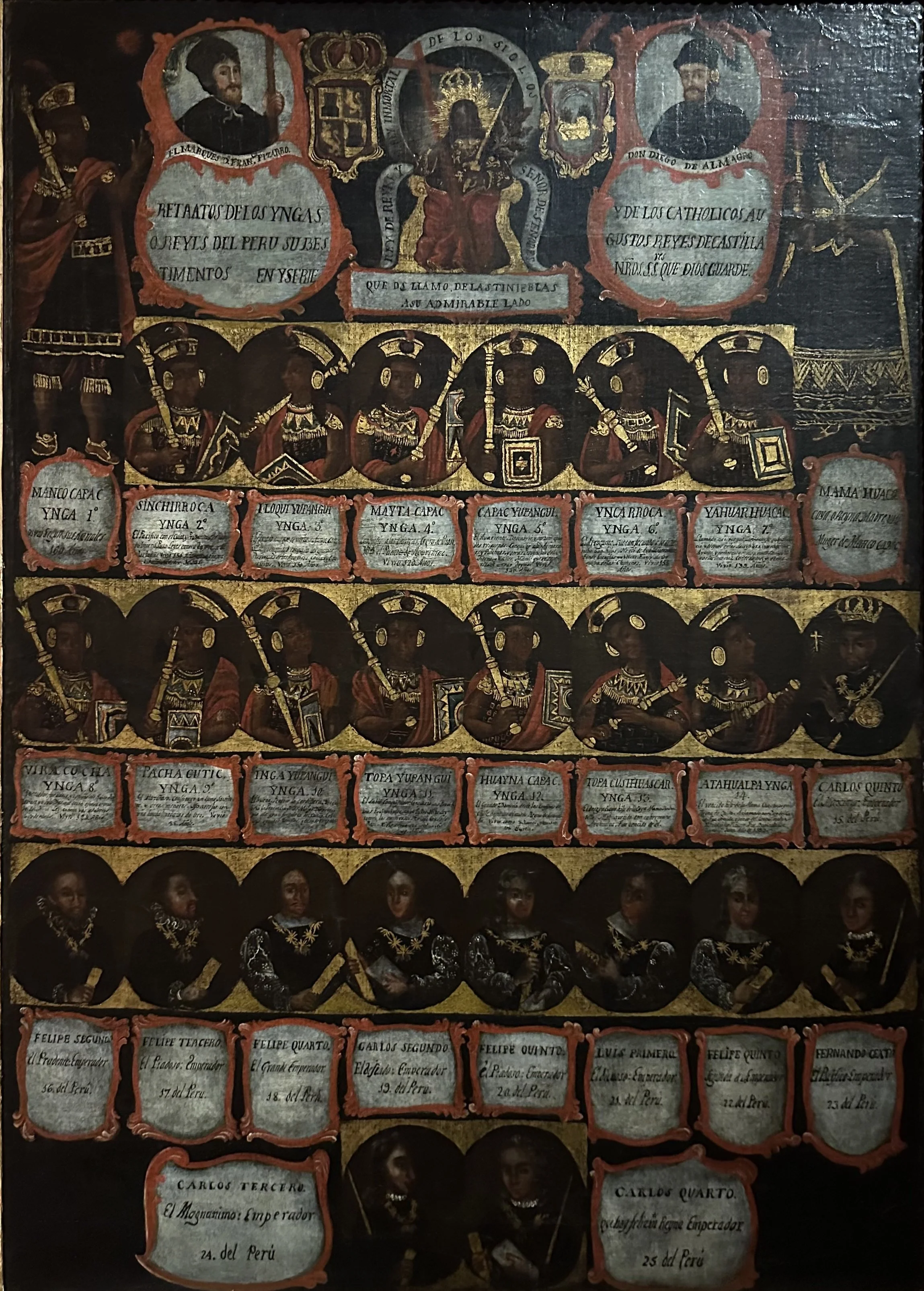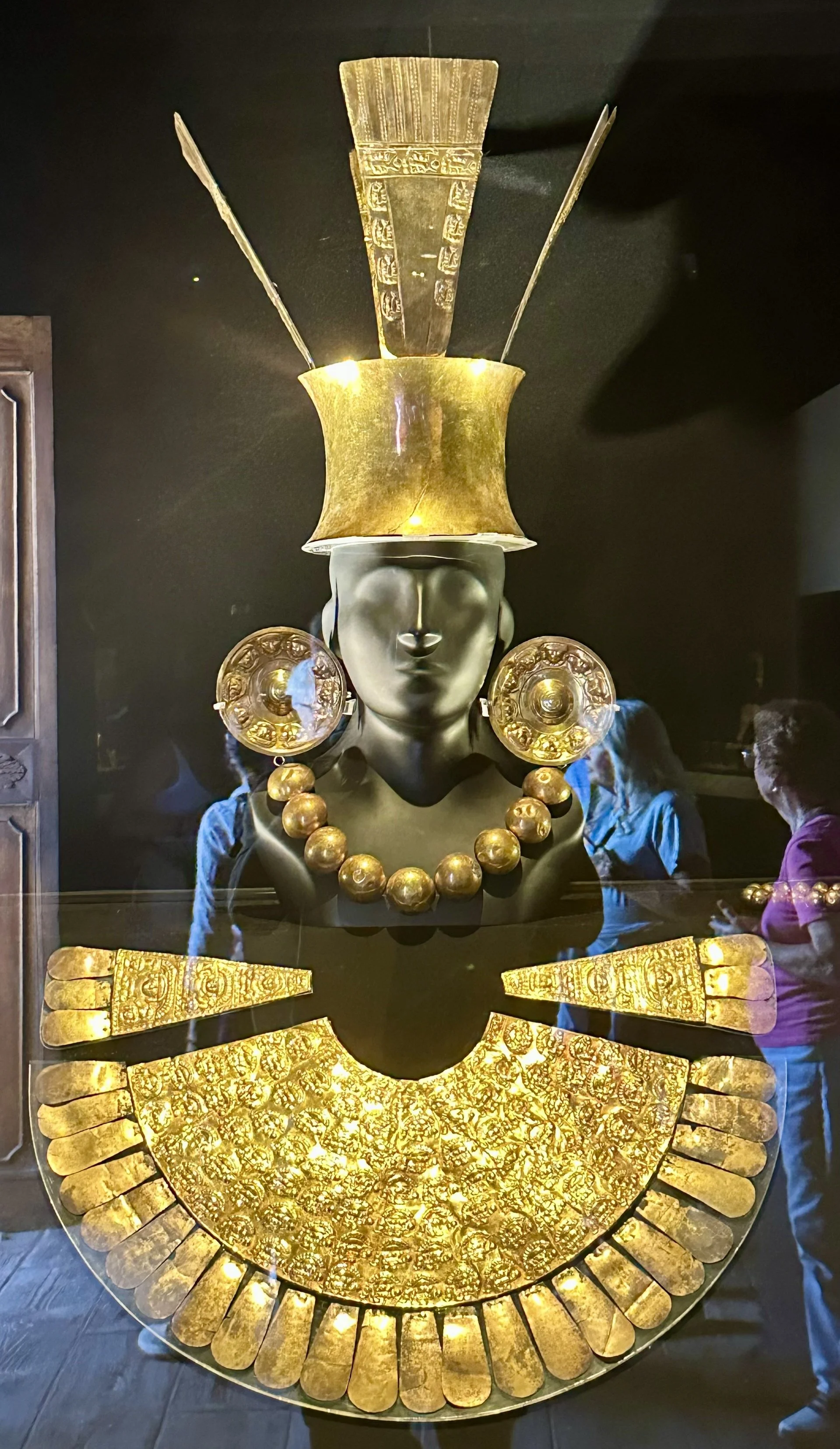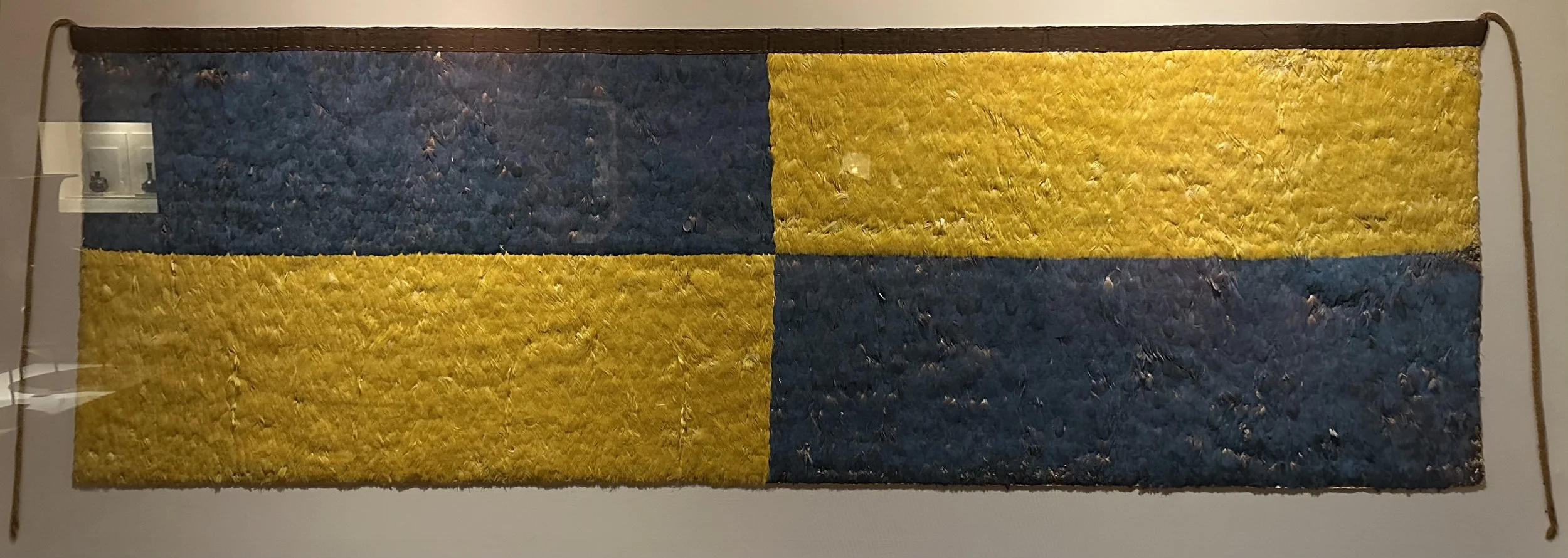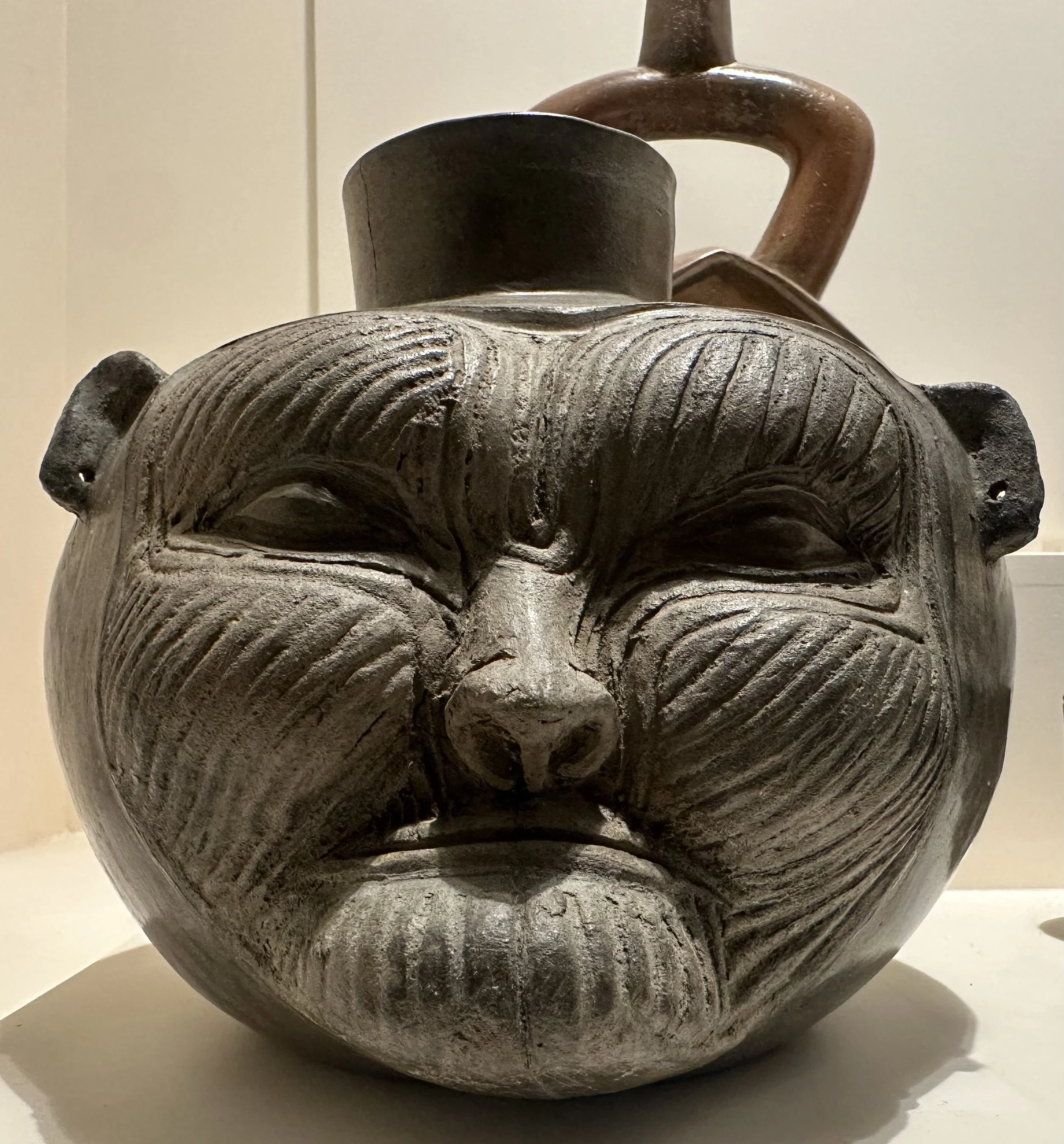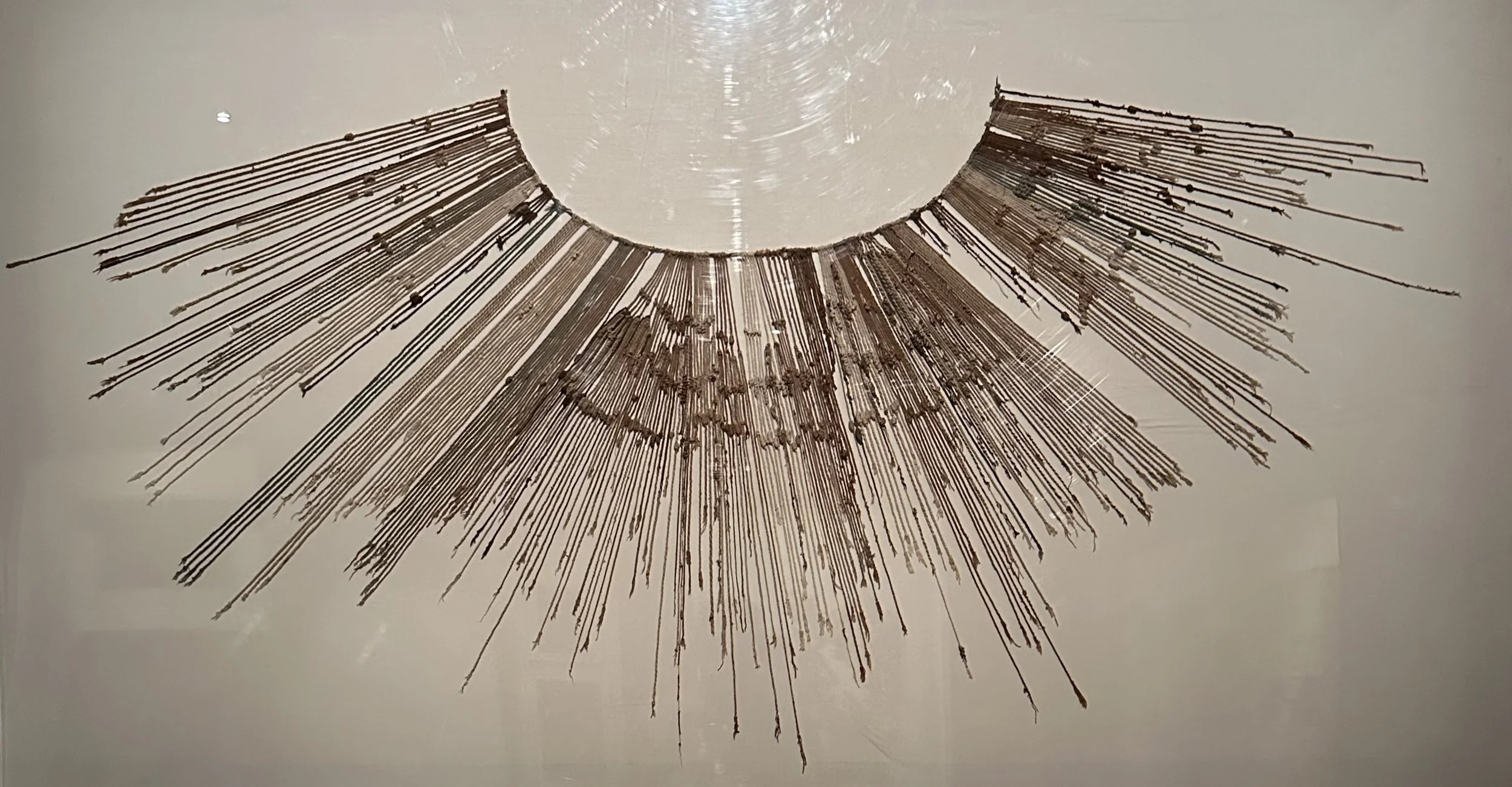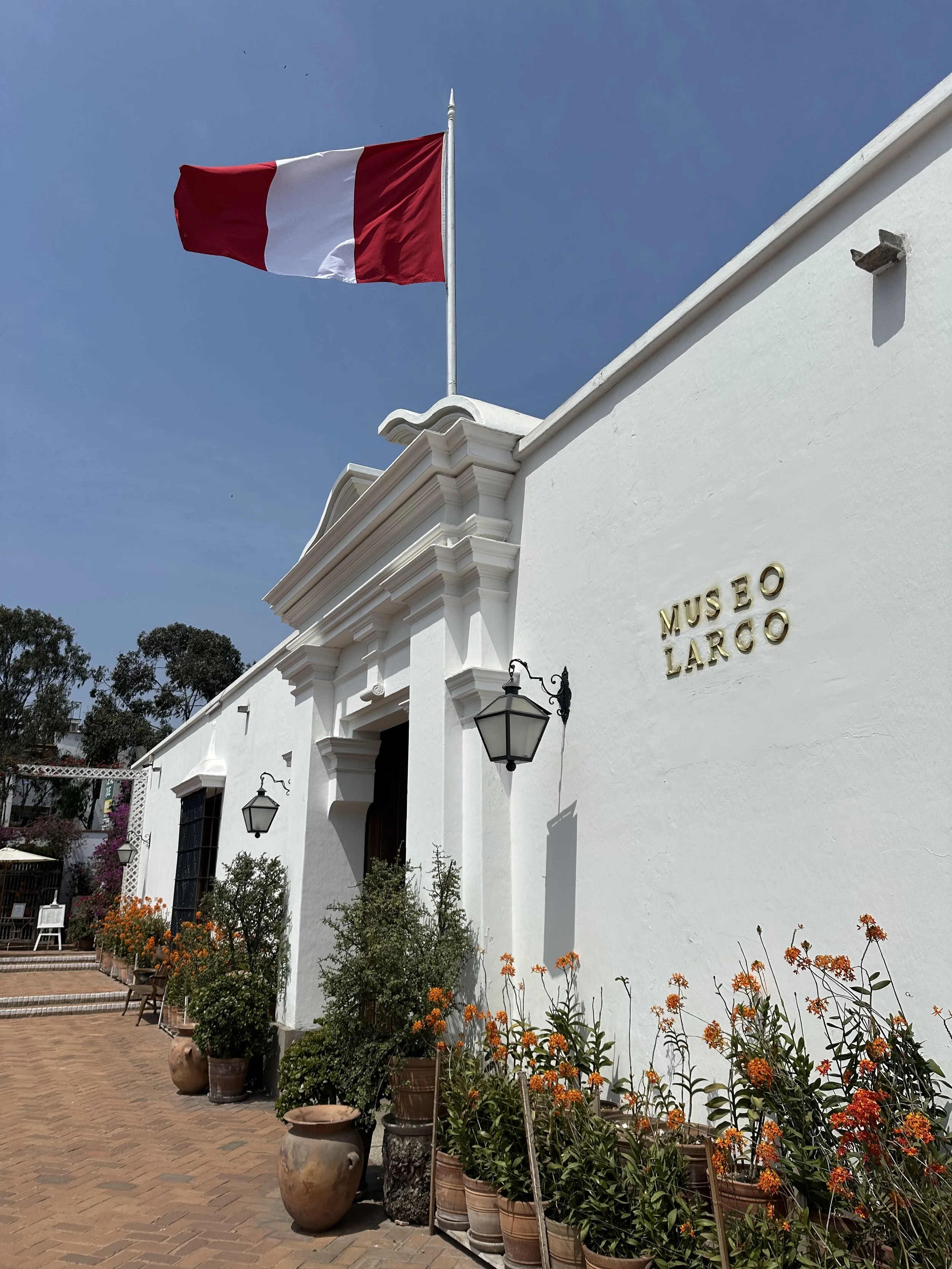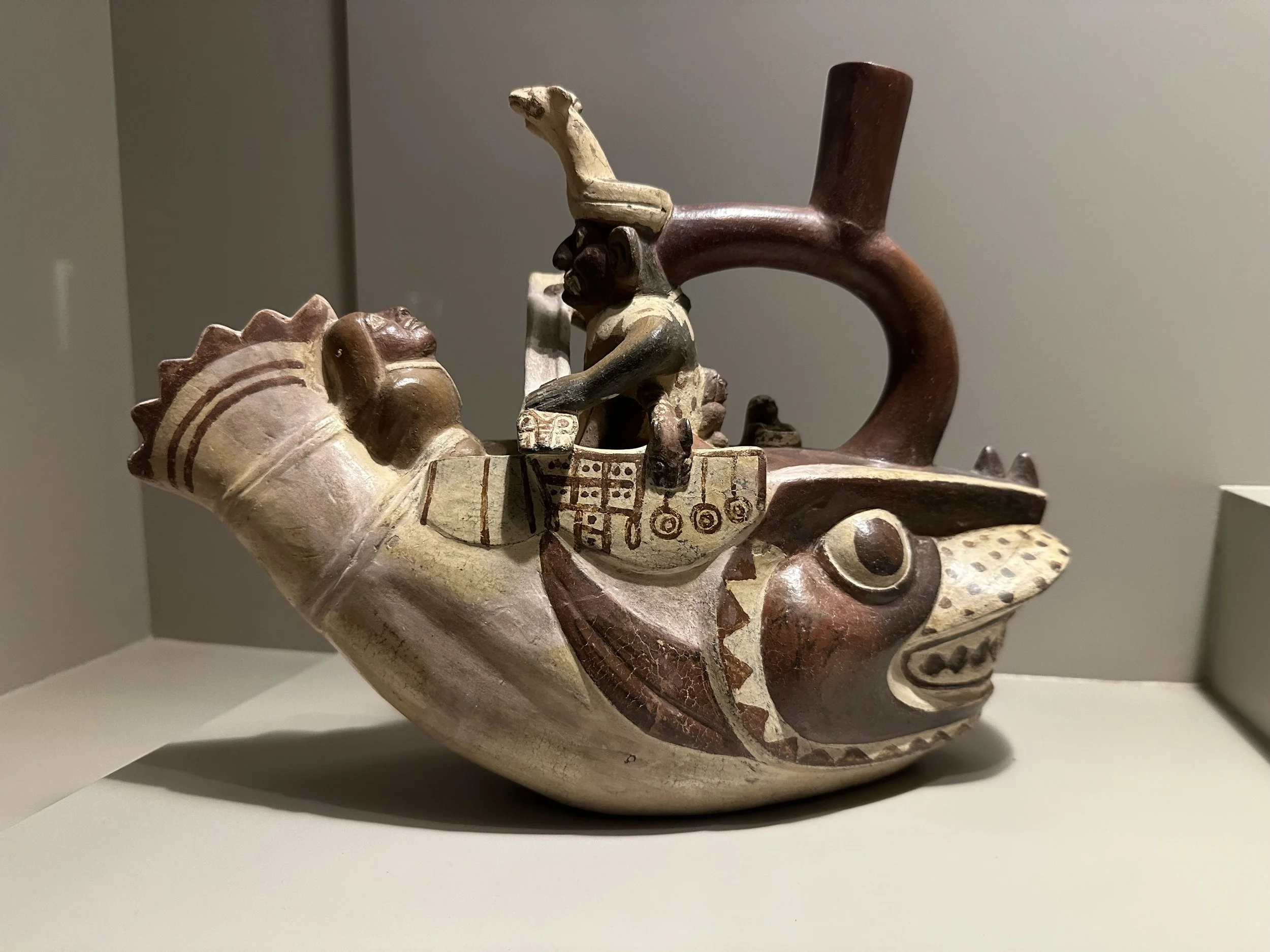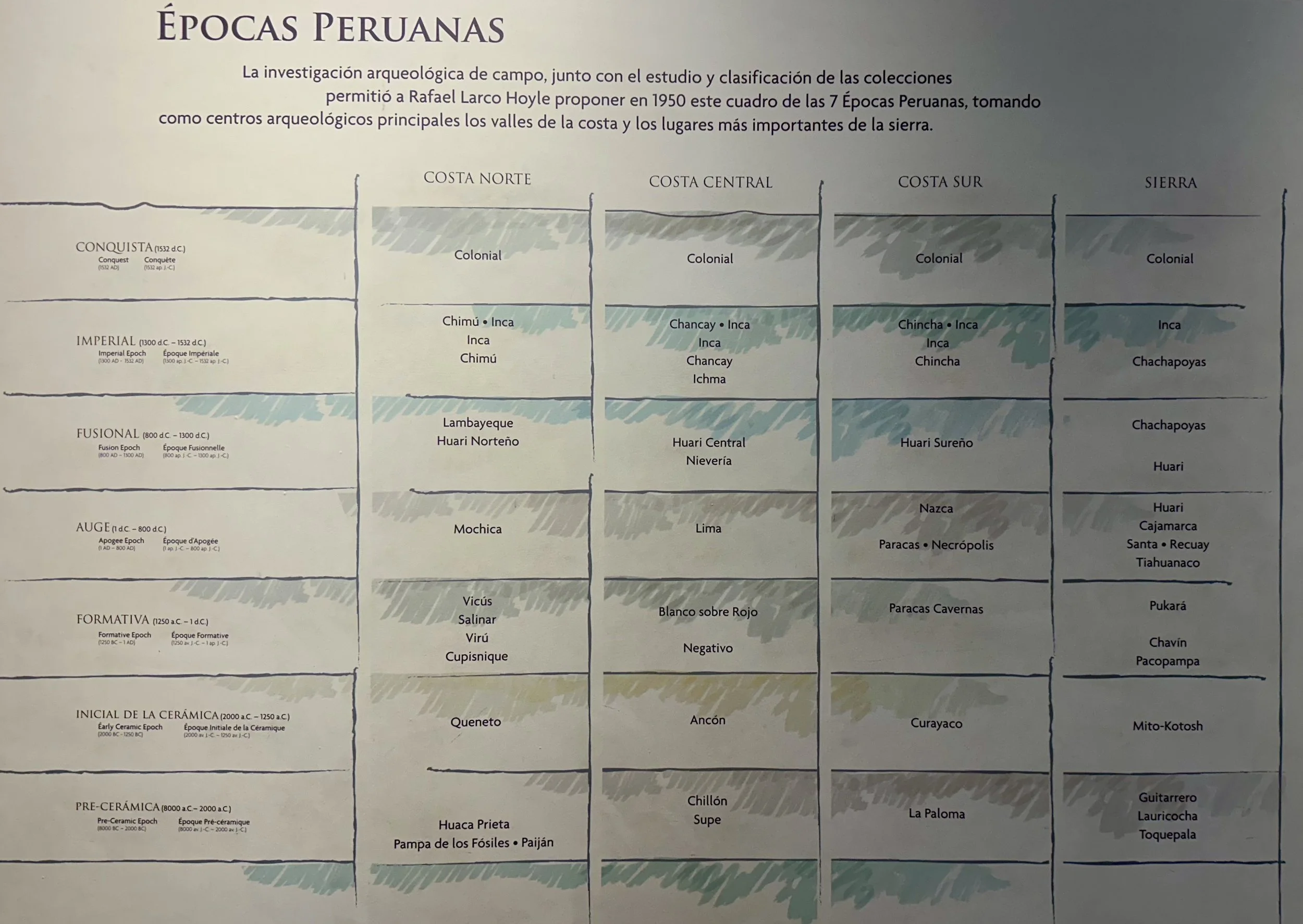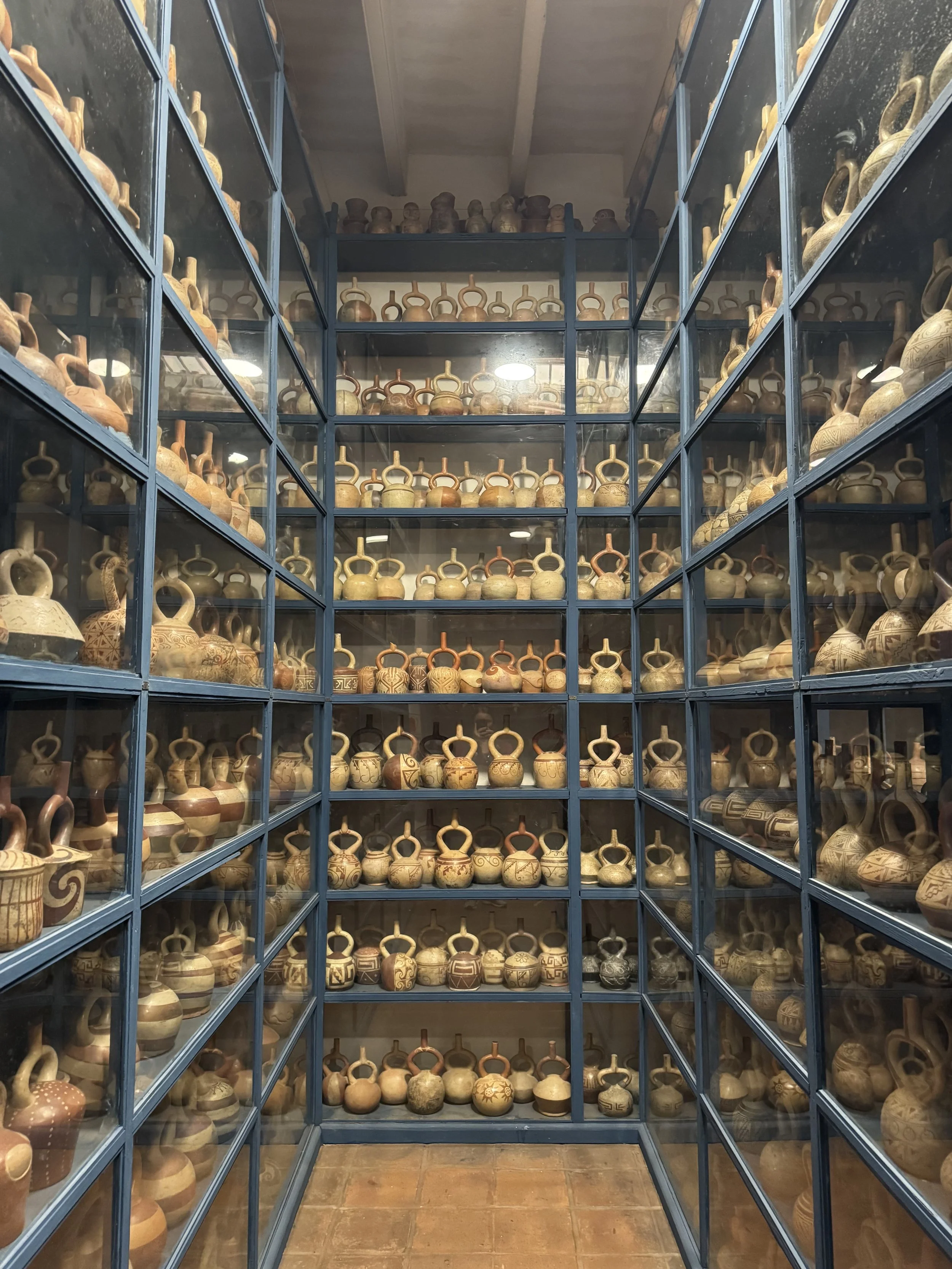Museo Larco
Ref: Museo Larco (2025). Lima, Peru.
___________________________________________________________________________
Cradles of Civilization
China, along the Yellow River.
India, along the Indus River.
Mesopotamia: Sumerian cities emerged between the Tigris and Euphrates (modern Iraq).
Egypt, along the Nile River.
Peru.
Americas, following the arrival of humans 40K BCE after crossing the Bering Strait.
___________________________________________________________________________
Peruvian Epochs
Pre-Ceramic Epoch (8000-2000 BCE): Hunter-gatherers began to inhabit the coast and exploit the resources of Peru’s seas. They fished and hunted using stone spearheads, made cotton nets for fishing, and built the first coastal settlements including Paiján, Huaca Prieta, and Caral.
Early Ceramic Epoch (2000-1250 BCE).
Formative Epoch (1250 BCE- 1).
Cupisnique culture develops with the emergence of the first temples. Artisans produced objects loaded with religious content. Gods were represented as animals with the feline as the symbol of power and strength showing its dominance over the deer, which symbolizes subjection to power. Birds represented the power of the skies, while the feline and the serpent represented the power of the earth and the subterranean world, respectively.
Vicus culture developed in the department of Piura in the far North of Peru.
Apogee Epoch (1-800): Characterized by an urban center with public spaces and administrative and ceremonial areas (temples and funerary zones). A governing elite comprised of great lords and ladies in whose hands all political, social, and religious power was concentrated. An official religion and a priest class entrusted with performing ceremonies and supervising the production of ritual objects while a caste of warriors participated in ritual combat and sacrifices.
Moche culture in the North of Peru. The principles Moche deities were represented as anthropomorphic figures. They can be recognized by the following- the erect body of a human, the fangs of a feline, ear plugs, belt or hair ending in serpent shapes; heads of birds with feathered headdresses. Moche myths tell of the journeys, encounters, and deeds of Ai Apaec and other gods.
Ai Apaec (‘the powerful’- Muchik): Moche god.
Lima culture in central Peru.
Nazca culture in Southern Peru. The Nazca lived on the south coast of Peru, which is a desert region. The Nazca made pilgrimages to their main temples at Cahuachi.
Tiahuanaco culture in the highlands around Lake Titicaca.
Fusion Epoch (800-1300).
Southern Huari culture: Emerged in Ayacucho in the southern highlands of Peru.
Imperial Epoch (1300-1532).
Chincha culture: Emerged in the southern valleys. The Chincha were mariners and traders and skilled weavers. The Inca conquered the Chincha chiefdom.
Inca Empire: Emerged in the 15c and incorporated the peoples of both the coast and the highlands. The initial expansion and reconstruction of Cuzco as the capital of the empire was achieved by Inca Pachacutec, the founder of the empire. Together with his son Tupac Yupanqui, he managed to control a vast territory through conquest, negotiation, and alliances. The Inca Empire efficiently appropriated the achievements of other peoples, such as the metalwork of the north, the architecture of the coast, the stockbreeding of the highlands and the trade of the south. The Incas extended their empire as far as northern Ecuador and southern Colombia, northern Argentina and the central belt of Chile. The empire was known as Tahuantinsuyu, or "the land of four suyus [provinces]". The monumental nature of its constructions expresses the imperial character of Tahuantinsuyu. The Incas carefully planned their cities and the interiors of their buildings. They built long roads and employed suspension bridges to shorten distances, and this system of highways was known as the Capac Nan. They left extraordinary agricultural terraces (‘andenes’) and irrigation systems. They developed recording and communication systems to control the administration of their vast territory. Pachacutec ordered the construction of beautiful palaces and residences which served as retreats, including Pisac, Ollantaytambo and Machu Picchu; the latter as a palace and mausoleum dedicated to the worship of the memory of the deceased Inca. Tupac Yupanqui ordered the construction of the imposing citadel of Sacsayhuaman, Huayna Capac, Tupac Yupanquis successor, dedicated much of his reign to the maintenance of the Incas imperial conquests and alliances, but he failed. Conflicts and competing interests emerged among the many families and groups in power. The war between Huáscar and Atahualpa, the sons of Huayna Capac, reflected this situation. The arrival of the Spanish conquistadores coincided with the internal conflicts of the Inca Empire.
Quipus: The main system employed by the Incas to record information. The knotted cords were used to record countable information. The colors, knots, and the distances between the knots enabled those who used the quipus to identify the type of object or the characteristics of the population being recorded. The Inca counting system was based on the decimal system. The quipus employed a system of knots which were positioned along the length of the cords to represent single units or tens of thousands of units. The colors of the cords and the structures of the threads and knots contain information regarding the identity of what was being counted and recorded. It was possible to distinguish between information dealing with population, men and women, type of work and production. Some very large quipus seem to have been used to record information about communities over a period of time, like a calendar. Quipus are formed by a primary cord and hanging cords. They were usually made from cotton, although some were made from camelid fibers. Some quipus also feature knotted hanging cords and set distances between groups of cords which may have enabled the user to distinguish between different categories of data.
Conquest Epoch (1532).
___________________________________________________________________________
Religion
The societies of ancient Peru maintained themselves through agriculture. Their primary concern was to ensure that the cycles of nature would be repeated without any major changes. The following conditions were of great importance: that the climate was favorable and water arrived at the right time and in sufficient quantity; that the land was fertile; that people worked in an organized manner.
The universe was composed of: the sky, where the rains came from, the land which had to be worked, and the subterranean world, where the fruits of the earth came from.
___________________________________________________________________________
Misc Quotes
“Cultures, like energy, are neither created nor destroyed, but rather transformed.”
___________________________________________________________________________
Chronology
1300-1532: Peru’s Imperial Epoch; Chincha culture emerges in Peru’s southern valleys while Inca culture emerges and incorporates the peoples of both the coast and the highlands (including the Chincha). The initial expansion and reconstruction of Cuzco as the capital of the empire was achieved by Inca Pachacutec, the founder of the empire. Together with his son Tupac Yupanqui, he managed to control a vast territory through conquest, negotiation, and alliances (Museo Larco).
800-1300: Peru’s Fusion Epoch; Southern Huari culture emerges in Ayacucho in the southern highlands of Peru (Museo Larco).
600: A strong El Nino causes serious flooding and impacts coastal fishing, contributing to the end of Moche culture (Museo Larco).
1-800: Peru’s Apogee Epoch; Moche culture emerges in the North of Peru, Lima culture emerges in central Peru, Nazca culture emerges in Southern Peru, and Tiahuanaco culture emerges in the highlands around Lake Titicaca (Museo Larco).
1250 BCE- 1: Peru’s Formative Epoch; Cupisnique and Vicus cultures emerge, the latter in Piura in the far North of Peru (Museo Larco).
2000-1250 BCE: Peru’s Early Ceramic Epoch (Museo Larco).
5 Ka: The first civilization emerges in the Andes (Museo Larco).
8000-2000 BCE: Peru’s Pre-Ceramic Epoch: Hunter-gatherers inhabit the coast and exploit the resources of Peru’s seas. They fished and hunted using stone spearheads, made cotton nets for fishing, and built the first coastal settlements including Paiján, Huaca Prieta, and Caral (Museo Larco).
14 Ka: The Andean region is first inhabited by humans (Museo Larco).
40,000 BCE: The first humans arrive in the Americas from Asia after crossing the Bering strait during the Wisconsin glacial period (Museo Larco).
___________________________________________________________________________
